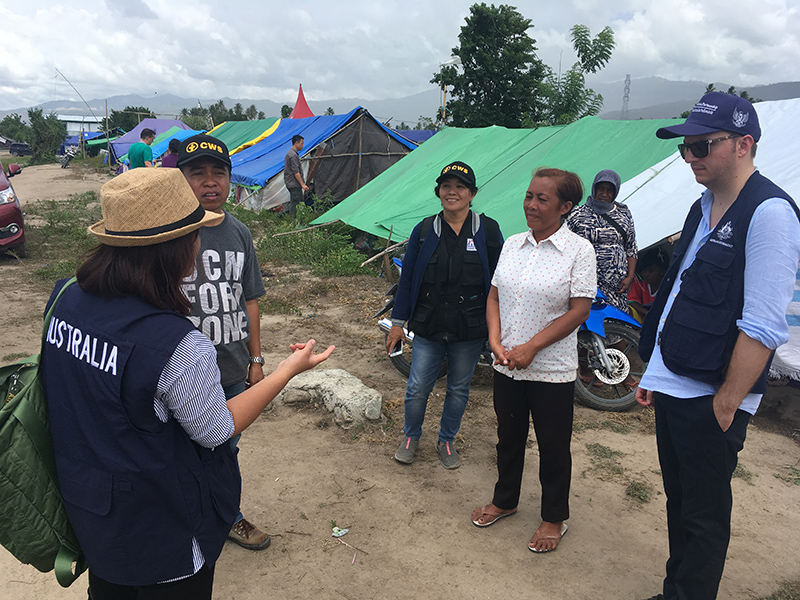Stories of Change

Henny (second from right) with Louis Henley, Second Secretary (Development Cooperation), Australian Embassy Jakarta, during a recent visit.
“The ground opened up and turned to liquid.”
“The mud flowed, destroyed our house and dragged it and other houses – or what was left of them – away.”
Henny Putong, 43, vividly recalls the moment on September 28 when her life, and those of her neighbors, turned upside down. It was the day Jono Oge, their village in Central Sulawesi, Indonesia, disappeared.
Henny and her family now live in a camp not far from where Jono Oge once was. There are more than 570 people from 187 families living in the camp. Henny is the coordinator here – one of few women who have that role. In fact, of the 431 camps in three districts in the area, fewer than one in five have women in camp management roles. Before the earthquake, Henny worked in the village administration office as the Head of Population Administration and Civil Registration. She was obviously well-suited to coordinate activities and services in the camp where she ended up living.
She is also a farmer and had a small food shop. “Now it’s all gone, but we are lucky to have survived,” she says.
CWS started supporting Henny and the others from Jono Oge a few days after the disaster. “CWS was the first organization to supply much-needed water, as there is no water source nearby and people walk a long way to a river to get water. Thanks to CWS, we now have a water tank that CWS refills daily with fresh water from a tanker truck.” Thanks to generous assistance from our ACT Alliance partners, the Australian and United States governments and others, CWS was able to provide hygiene supplies, large water storage buckets, jerry cans, tarps, sleeping mats, mosquito nets and emergency solar lamps to the families from Jono Oge and from dozens of other villages that were destroyed or severely affected by the earthquake and its aftermath. Now, three months after the earthquake hit, CWS is still working with other non-governmental organizations and the Indonesian government to continue relief work with a particular eye toward early recovery initiatives in 2019.
Note regarding the story title: When the earthquake struck Central Sulawesi, the land became something like quicksand. This is known as soil liquefaction. It occurs when soil that is saturated with water loses strength and stiffness in response to stress – like the earthquake. So, soil that is ordinarily solid turns liquid.
